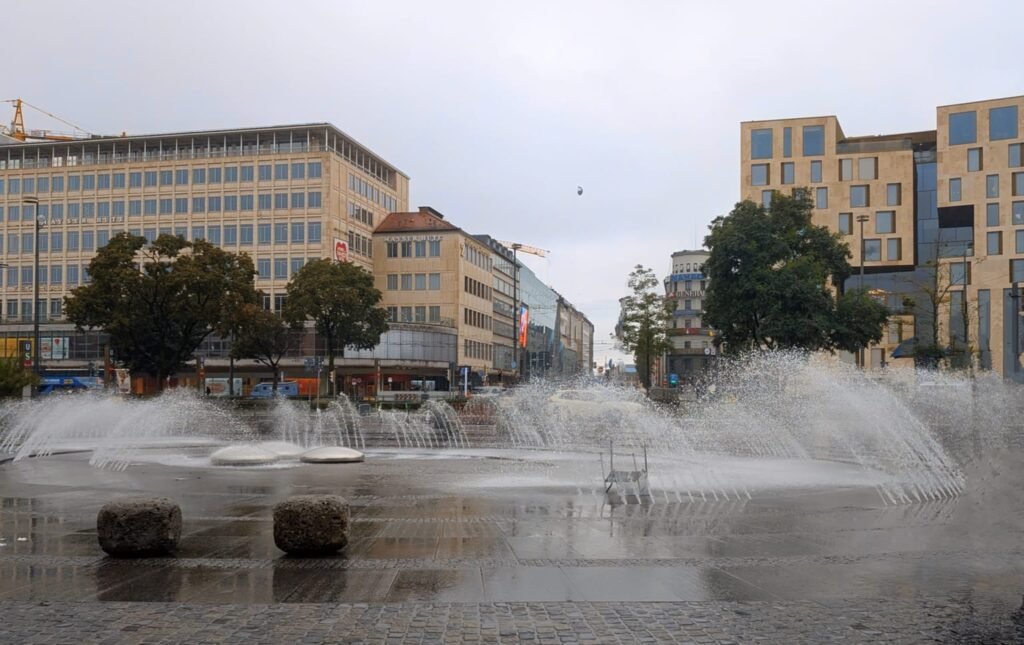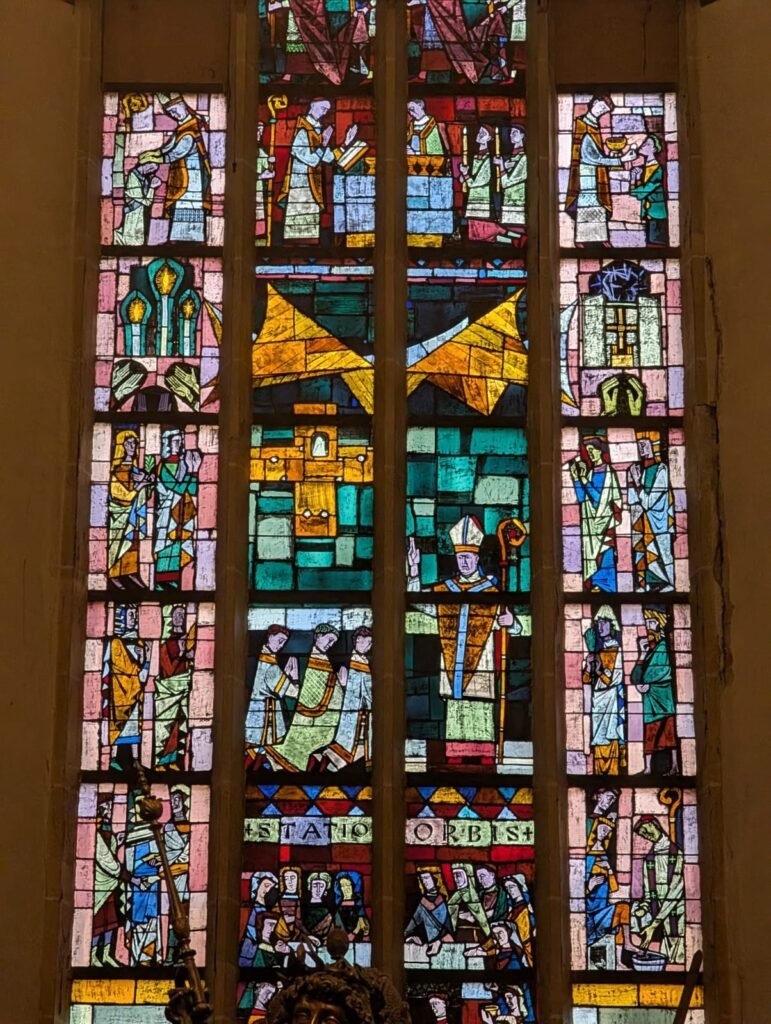Pressed for time but craving a taste of Munich’s Old Town magic? This itinerary to explore is here to make sure you get the full Bavarian experience! But first, head over to our blog on exploring Central Europe in 14 Days!
In this blog, you’ll uncover all the essentials of Munich’s charm, history, and flavor, from legendary landmarks to cozy beer halls. Get ready to dive into cobblestone streets, marvel at architectural wonders, and feast on some seriously tasty treats. Here’s your ticket to exploring the heart of Munich – Old Town and its Gothic History.
Discovering Munich’s Old Town Charm
Welcome to Munich’s Old Town, where every cobblestone seems to whisper Bavarian secrets! This historic heart of Munich is where centuries-old churches, grand squares, and lively markets paint a picture of the city’s past. Founded in 1158—yes, way back when people wore chainmail instead of lederhosen—the Old Town has survived everything from medieval plagues to Oktoberfest hangovers.
Strolling through it, you’ll meet characters from the past: kings who built castles, monks who brewed beer, and clockmakers who somehow managed to turn telling time into a theatrical event (looking at you, Rathaus-Glockenspiel!). Soak up the blend of tradition and modernity here—it’s like taking a time machine that stops at all the best snack bars along the way!

1. Karlplatz (Stachus)
Begin your day at Karlplatz, commonly called “Stachus” by locals. Stachus is one of Munich’s busiest and most iconic squares, blending history and modern energy. Originally named after Elector Karl Theodor, who wasn’t exactly popular with the locals, the square later adopted its quirky nickname from an innkeeper named Eustachius Föderl, whose pub became the neighborhood hotspot. Stachus has seen it all: medieval fortifications, dramatic architectural changes, and even some wartime scars.
Today, it’s a bustling hub framed by the Karlstor Gate, a grand remnant of Munich’s old city wall, where shoppers, sightseers, and the occasional street performer converge. Whether you’re drawn to the shopping or the stunning fountain that splashes up a storm in summer, Stachus is a vibrant gateway to the charm of Munich’s Old Town.

2. St. Michael’s Church (St. Michael’s Munchen)
Head toward St. Michael’s Church, a striking Renaissance-style church that’s one of Munich’s most important Jesuit landmarks. Built in the late 16th century, St. Michael’s Church is one of the largest Renaissance churches north of the Alps. It was commissioned by Duke William V of Bavaria as part of the Counter-Reformation to demonstrate the strength of the Catholic faith. Its high, richly decorated vault features a beautiful barrel ceiling, making it an architectural marvel of its time. The crypt of St. Michael’s holds the tomb of King Ludwig II, adding to its historical importance.

3. Marienplatz & the Rathaus-Glockenspiel
Stroll over to Marienplatz, Munich’s historic heart. Named after the Mariensäule, a Marian column erected in 1638 to celebrate the city’s survival during the Thirty Years’ War, it’s home to the New Town Hall (Neues Rathaus), a neo-Gothic masterpiece. The Rathaus-Glockenspiel, a charming clock with animated figures, was added in 1908 and reenacts two stories from Munich’s past daily, delighting visitors with its melodic chimes and intricate mechanical show.

This square is alive with energy, whether from street performers or the anticipation around the Rathaus-Glockenspiel clock. This famous clock performs at 11 a.m. and noon, featuring life-sized figurines dancing in a spectacle that draws crowds every day. Snap some photos and, if you’re visiting in winter, imagine the square brimming with festive holiday markets.

4. Frauenkirche (Cathedral of Our Dear Lady)
A short walk from Marienplatz is the Frauenkirche, with its iconic twin towers. This Gothic-style cathedral, the largest in Munich, dates back to the 15th century and offers stunning views of the city from its towers. Inside, admire the grand altar and intricate stained-glass windows.

The Frauenkirche is an enduring symbol of Munich. Built between 1468 and 1488, it’s known for its distinct twin towers capped with onion domes, which dominate Munich’s skyline. Legend has it that the devil’s footprint is imprinted at the cathedral’s entrance, symbolizing the devil’s frustration when he realized he couldn’t see any windows inside. It’s a beautiful example of late Gothic architecture, with a rich, mystical history.

5. St. Peter’s Church
Next up is St. Peter’s Church, Munich’s oldest, with roots going back to the 12th century. Known as “Old Peter”, as the locals affectionately call it, it is Munich’s oldest church, dating back to the 12th century. It has been rebuilt and expanded over the centuries, especially after being heavily damaged in World War II.
Known for its magnificent Baroque altar and frescoes, St. Peter’s also offers a stunning panoramic view of Munich from its tower – a rewarding climb for those who can manage its 300+ steps. Its Gothic architecture and rich interior will captivate you, but the real treasure here is the jeweled skeleton of St. Mundita, a martyr covered in gold and adorned with precious stones. For a small fee, climb the tower to enjoy one of the best views of Munich’s skyline. If you’re not up for the climb, simply marvel at the opulent decor of the interiors.

6. Viktualienmarkt – A Food Lover’s Paradise
End your Old Town exploration with a stop at Viktualienmarkt, an open-air market dating back to the 1800s. Whether you’re craving pretzels, sausages, or fresh produce, this market has it all. Originally a farmer’s market that began in the early 19th century, Viktualienmarkt has grown into a vibrant food market in the heart of Munich, celebrated for its wide array of fresh produce, meats, cheeses, flowers, and Bavarian specialties.

This market is not only a feast for the senses but also an excellent spot to experience Munich’s culinary culture. Locals and visitors alike enjoy its beer garden, where traditional Bavarian foods pair perfectly with a refreshing mug of beer. Grab a snack from a local vendor or settle down with a beer at one of the outdoor tables and soak up the atmosphere.
Dinner at a Traditional Bavarian Restaurant
Wrap up day at the Old Town Munich with a hearty Bavarian meal. We recommend Andechser am Dom. Located close to Frauenkirche, this spot has a cozy ambiance and offers classic dishes like Schweinshaxe (pork knuckle) and dumplings. Look forward to a detailed blog on the foods of Bavaria!
After dinner, feel free to stroll on the historic cobbled streets, window-shopping, or simply grabbing a coffee and pretzel and admire the sights of Marianplatz. We loved browsing the FC Bayern store!

Tips for a Smooth Visit
- Transport: Munich’s public transport system is reliable and easy to navigate. Consider getting a day pass for unlimited rides on U-Bahn, S-Bahn, trams, and buses.
- Timing for Attractions: Arrive at popular spots like Rathaus-Glockenspeil or Viktualenmarkt early to avoid crowds.
- Seasonal Differences: If you’re visiting in the summer, you can enjoy outdoor beer gardens, whereas winter brings cozy indoor dining and Christmas markets if you’re lucky enough to visit in December.
With this guide, you’ll capture the essence of Munich’s historical Old Town and vibrant markets and mouth-watering cuisine in the most kid-friendly way possible. Whether you’re feasting on bratwurst, marveling at Gothic architecture, or watching the mini concert at the Glockenspiel, Munich is sure to leave you with unforgettable memories. Prost!






2 Responses